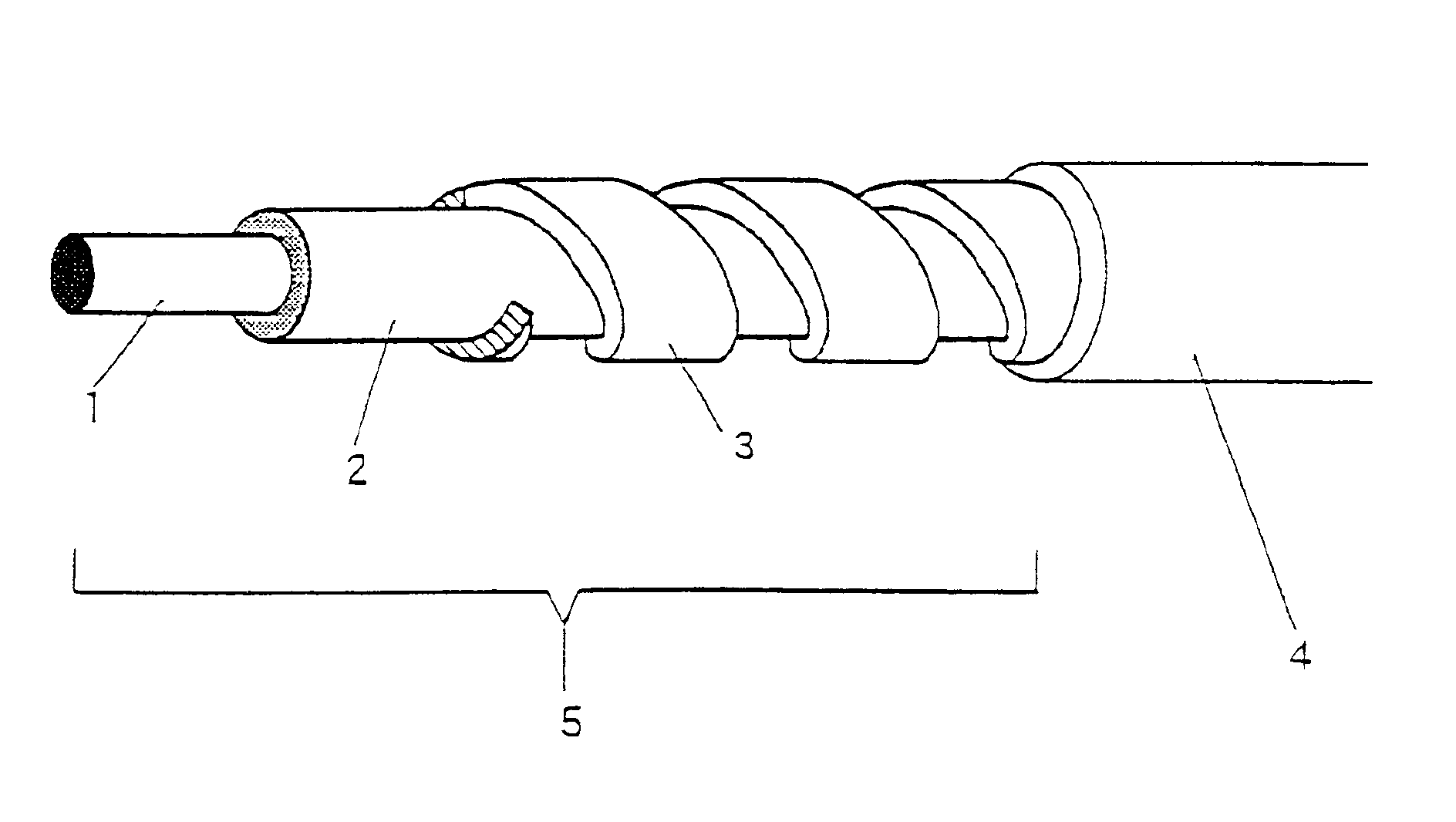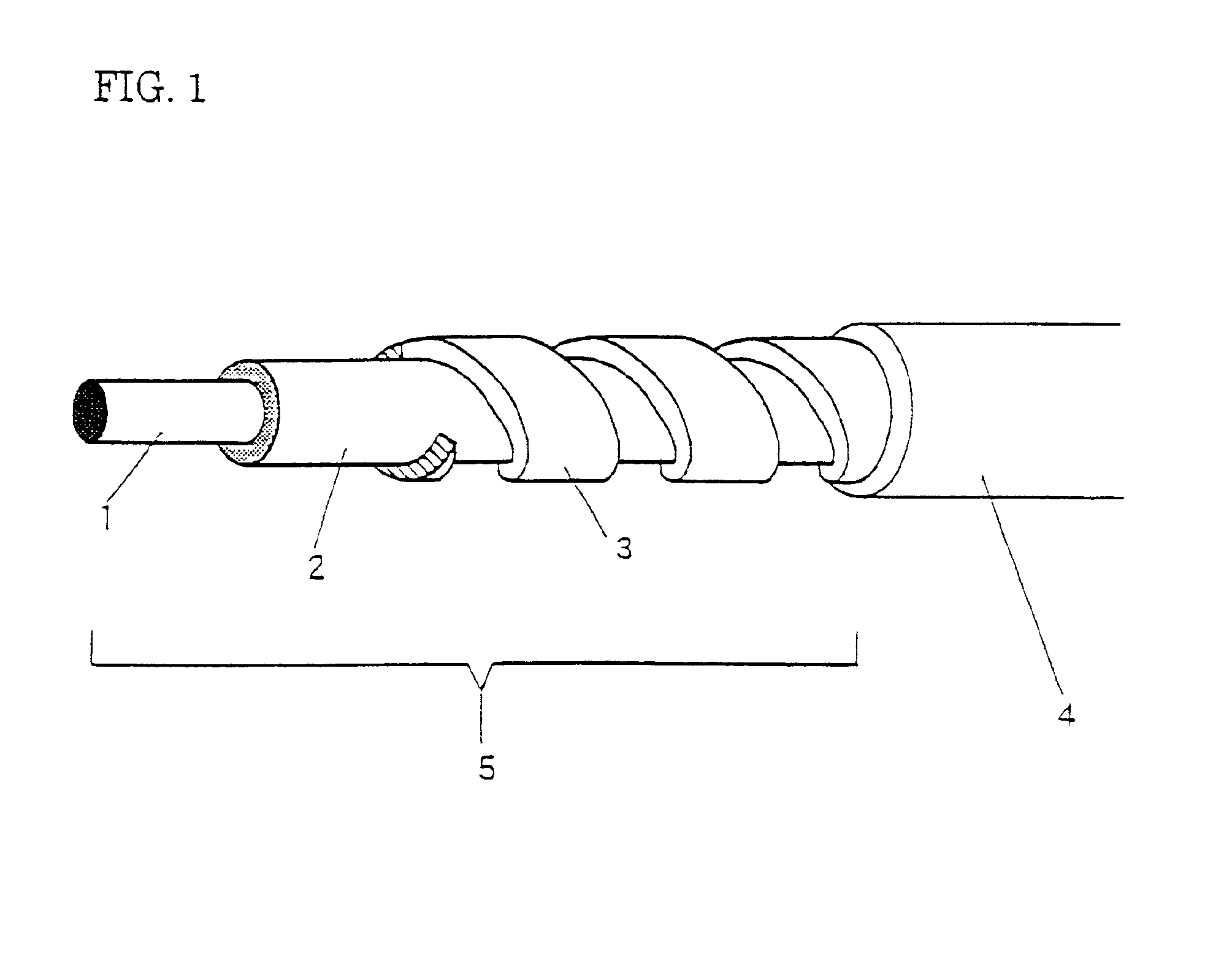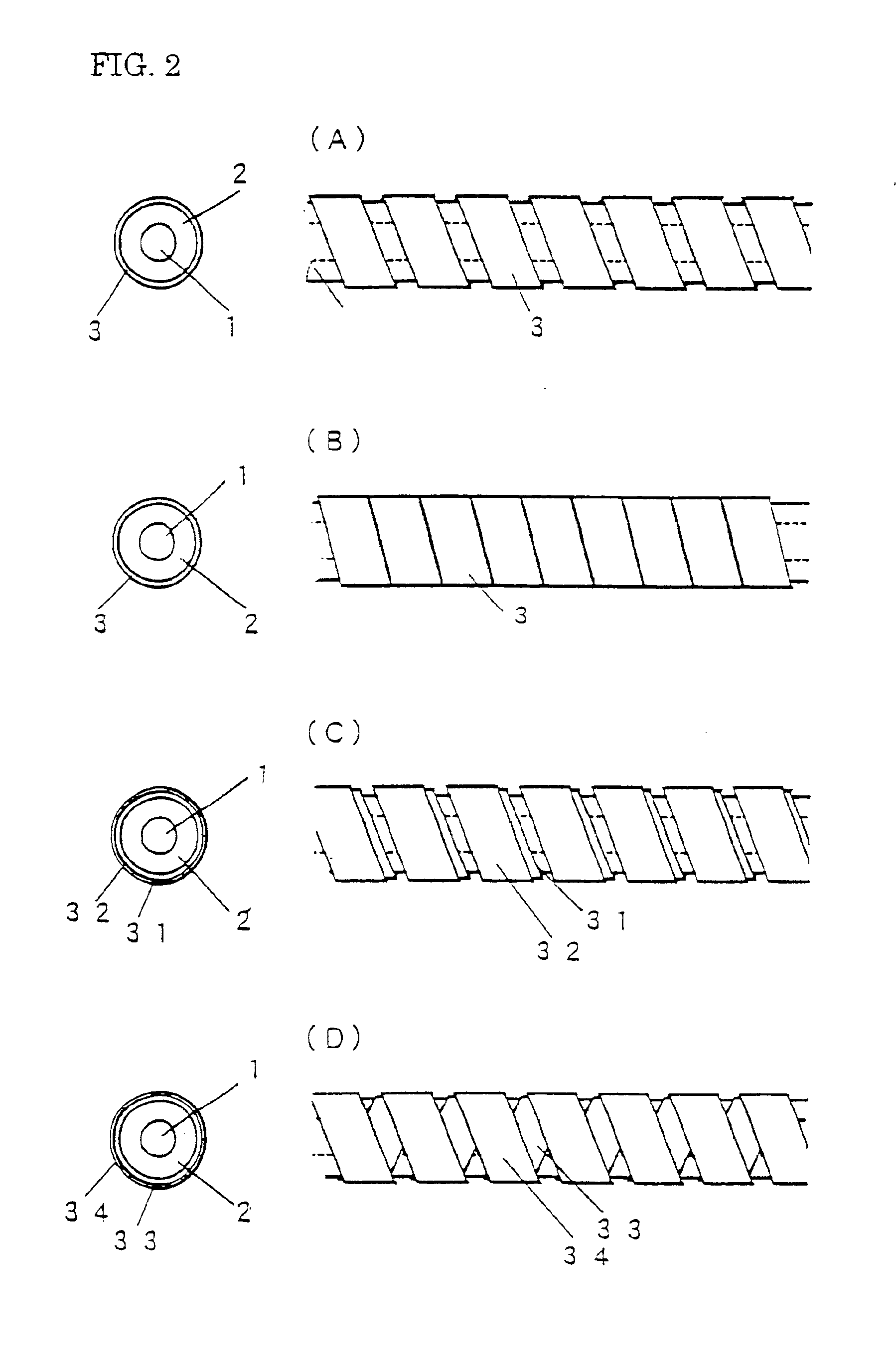Coaxial cables, multicore cables, and electronic apparatuses using such cables
a technology of coaxial cables and coaxial cables, which is applied in the direction of power cables, cables, insulated conductors, etc., can solve the problems of troublesome removal of outer conductors, serious problems, and decrease the dielectric strength of the insulation layer, so as to increase the demand for further downsizing, increase the noise of production, and reduce the effect of production costs
- Summary
- Abstract
- Description
- Claims
- Application Information
AI Technical Summary
Benefits of technology
Problems solved by technology
Method used
Image
Examples
example 1
[0033]For use as the outer conductor, a tin-plated round wire 40 of a copper alloy of 0.05 mm in outer diameter having a cross section as shown in FIG. 5(A) was pressed and thereby a long ribbon-shaped conductor 42 0.012 mm thick and 0.18 mm wide having a cross section as shown in FIG. 5(B) was manufactured. As the insulation layer 2, PFA (tetrafluoroethylene-perfinoroalkylvinylether copolymer) resin was extruded to over the periphery of a center conductor 1 of 0.09 mm in outer diameter (seven tin-plate copper-alloy wires of 30 μm in outer diameter being stranded) by a known extruding and covering method so that a circular profile of 0.23 mm in outer diameter is formed. Then, the above described tape-shaped conductor (42) was helically wrapped around the same, so as to form an angle Φ of 68 degrees with respect to the axis of the coaxial element wire, by open wrapping as shown in FIGS. 2(A)(1) and 2(A)(2), spaced apart at a pitch of 0.29 mm, under a tension of 60 gf per piece. In th...
example 2
[0041]In Example 2, a coaxial element wire was produced by helical wrapping of a ribbon-shaped conductor 3 under a tension of 55 gf per piece, at a pitch of 0.18 mm, at an angle of 75 degrees, and in a butt-joined manner as shown in FIGS. 2(B)(1) and 2(B)(2). This coaxial element wire was excellent in all of the withstand voltage characteristics, bending characteristics, torsion characteristics, and electrostatic noise characteristics. Using this coaxial element wire, a single-core coaxial cable, a flat type multicore cable, and a multicore cable were produced in the same manner as in Example 1.
[0042]It was confirmed also with the thus obtained coaxial cable and multicore cables that their insulating characteristics and other characteristics are good.
example 3
[0043]In Example 3, a coaxial element wire was produced by helical wrapping of ribbon-shaped conductors 31 and 32, under a tension of 65 gf per piece, at a pitch of 0.29 mm, and at an angle of 68 degrees (double sheets were wrapped, each in open wrapping, in the same direction), as shown in FIGS. 2(C)(1) and 2(C)(2). The coaxial element wire shown in FIGS. 2(D)(1) and 2(D)(2) was also produced by wrapping ribbon-shaped conductors 33 and 34 at a pitch of 0.29 mm and at an angle of 68 degrees, with the second conductor 34 wrapped in the opposite direction from the first conductor 33. These coaxial element wires had excellent withstand voltage characteristics, bending characteristics, torsion characteristics, and electrostatic noise characteristics and especially excellent shielding characteristics of the outer conductor layer. Also by the use of these coaxial element wires, a single-core coaxial cable, a flat type multicore cable, and a multicore cable were produced in the same manner...
PUM
| Property | Measurement | Unit |
|---|---|---|
| thickness | aaaaa | aaaaa |
| thickness | aaaaa | aaaaa |
| wrapping angle | aaaaa | aaaaa |
Abstract
Description
Claims
Application Information
 Login to view more
Login to view more - R&D Engineer
- R&D Manager
- IP Professional
- Industry Leading Data Capabilities
- Powerful AI technology
- Patent DNA Extraction
Browse by: Latest US Patents, China's latest patents, Technical Efficacy Thesaurus, Application Domain, Technology Topic.
© 2024 PatSnap. All rights reserved.Legal|Privacy policy|Modern Slavery Act Transparency Statement|Sitemap



